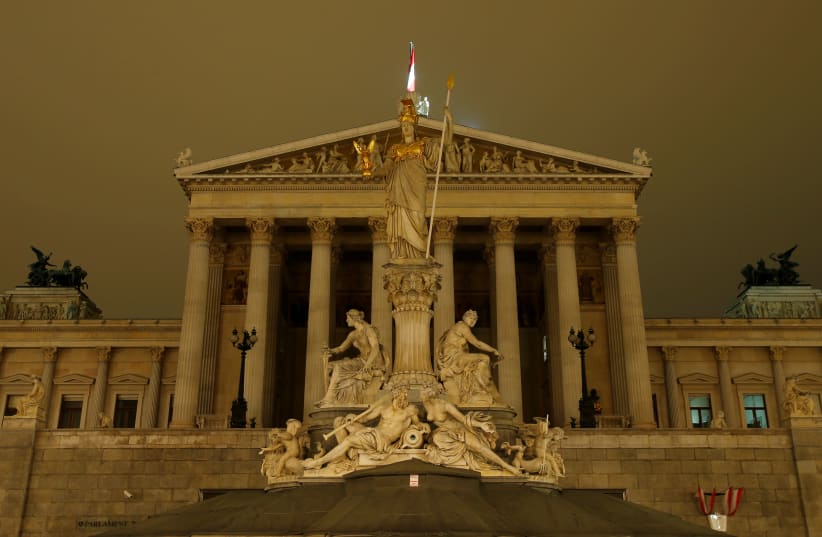Of all Austrian philanthropic societies, B’nai B’rith is one of the most discrete. The reason doesn’t root in any kept secrets, but rather in a historical trauma.
By the mid-1920s, there were already enough indications that the world was heading for stormy times. In 1929, Rabbi David Feuchtwang wrote about National Socialism haunting the Jewish members of society: “In Germany the situation of the Jews is constant. The swastika still acts in the well-known German-national circles and provokes excesses here and there, which symptomatically lead toward desecrations of Jewish cemeteries and gravestones to the shame of the praised German culture and education.” All kinds of antisemitic conspiracy delusions were on the agenda. Erich Ludendorff, a German general, politician and figurehead of the extreme Right during Weimar Republic embodied the “Zeitgeist” of those days.
In the line of fire
Under the Austro-fascist regime (1933-1938), BB was forced to act diplomatically. It needed to document its loyalty to the Christian corporative state which did not tolerate “open” antisemitism – more out of raison d’état rather than being truly committed against discrimination. Therefore, BB did not hesitate to call for a funeral rally for the murdered Federal Chancellor Engelbert Dollfuss on September 20, 1934, in order to counter the mistrust of antisemitic circles. In addition, a number of publications such as Salomon Frankfurter’s Der Bund Bnai Brith were published in the mid-1930s. Unimaginable from today’s perspective, meticulous insights into the activities of the Order were provided. What was meant as a demonstration of openness culminated in the disclosure of all members in the public address book of 1936. A fatal mistake, as it turned out later.
Once the Nazis took over power, as early as March 1938, the authorities just needed to pick up one after the other from his flat. No need to mention that like all other Jewish institutions, BB was dissolved after Austria’s occupation through German troops in 1938 – the so-called “Anschluss.” The organization’s assets were seized and it is quite likely that many members had to endure endless tortures by the Nazi security apparatus thinking it had captured agents of the “Jewish world conspiracy.”
Early years
“Austria” was the patriotic sounding name of the first lodge on Austrian soil. Founded in 1889 in Bielitz (today Bielsko-Biała Poland), in the then Austro-Hungarian Monarchy, its official name was “Israelitischer Humanitätsverein.” This was a precautionary measure since the term “lodge” was associated with Freemasonry, which was still forbidden at that time. On 30 December 1894, Austria-Hungary was constituted as the XI District of the International Order. Thus, for the first time since the Order was founded in New York in 1843 an independent district was established in “Austria.” An umbrella organization (“Grand Lodge”) for the Austrian lodges was founded in Prague in 1897, headed by the lawyer Dr. Moriz Hammerschlag, who was president until 1911. His successor, Dr. Salomon Ehrmann of the “Vienna” lodge finally brought the Austrian chapter back to the capital of the Austrian-Hungarian Empire. It is worth mentioning that the “Vienna” lodge, based at Universitätsstraße No. 4, became the largest in membership and intellectually the most distinguished. By 1912, there were already 15 lodge foundations with a total of 1,700 members.
Good deeds with intention, not for attention
The charitable work of the BB before World War I was mainly concentrated on helping the poor, especially children from deprived backgrounds. The most prominent initiatives were the “Hilfsverein für die nothleidende jüdische Bevölkerung in Galizien,” founded in 1899, the Viennese “Kinderschutz” association (from 1899), the Jewish Toynbee Hall (from 1900), the “Verein zur Errichtung und Erhaltung von Horten für schulpflichtige Kinder” (from 1906) and finally the “Verein zur Gründung und Erhaltung des Kaiserin Elisabeth-Instituts für israel. Krankenpflegerinnen” (from 1908). Sometimes, help was organized simply through direct participation. In 1920, for example, the “Wahrheit” lodge introduced compulsory membership of the Jewish Museum for all its brothers. This tradition of “silent help” is a very different approach compared to today’s self-marketing-driven initiatives such as corporate responsibility programs or shrill donation celebrations run by large companies. Elite without being elitist
The most prominent grand presidents during the interwar period were personalities such as Prof. Dr. Salomon Ehrmann (1920–1926), Dr. Edmund Kohn (1927–1929), Dr. Moriz Schnabl (1930–1933), Prof. Dr. Ludwig Braun (1934–1936) and Dr. Felix Kohn (1937–1938). Taking a closer look into membership lists unveils a Who’s Who of that time: Chief Rabbi Zwi Perez Chajes and his successor Dr. David Feuchtwang, president of the Jewish community murdered in Auschwitz, Israel Taglicht, the Nobel Prize winner for medicine (1936), Prof. Dr. Otto Loewi, the writer Felix Salten, university professors Max Eisler, Wilhelm Jerusalem, Leopold Königstein, Moritz Oppenheimer, the writer Adolf Kapralik, the industrialists Emil Kahane and Julius Bunzl, the journalist Eugen Lennhoff, the painter Jehuda Epstein, and Arnold Ascher, secretary-general of the Baron Hirsch Foundation – and many more. The density of celebrities in the “Vienna” lodge was legendary. Among its ranks were personalities such as Sigmund Freud, building councillor Wilhelm Stiassny, architect Max Fleischer and the painter Isidor Kaufmann.
Nonetheless, the bulk of BB members came from the solid middle class, consisting of lawyers, doctors, merchants, scientists and journalists. But rising antisemitism, social crisis and political turmoil led to a steady decline in membership: there were 871 brothers in 1925, 845 in 1931 and only 715 in 1937. BB’s estate was robbed by the Nazis and brought to Berlin. After the Second World War, the Red Army confiscated the material and kept it in the so-called Special Archive Moscow. Various efforts to restitute materials from Russia have failed. Even an initiative by the former Austrian president, Heinz Fischer, in 2018 did not bear fruit.
The writer is a publicist living in Austria.
